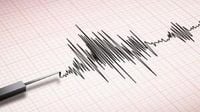On Monday, July 15, 2025, a significant earthquake with a preliminary magnitude of 6.2 rattled the Pacific coast of Panama, sending tremors through the Chiriquí province near the Costa Rican border. According to the United States Geological Survey (USGS), the earthquake struck around midday approximately 130 miles (210 kilometers) south of Punta Burica, settling at a shallow depth of 10 kilometers (6 miles) beneath the earth's surface.
The tremor was notably felt in Chiriquí and the surrounding western regions of Panama, an area known for its seismic activity due to its geographical positioning along tectonic boundaries. Despite the intensity of the quake, local authorities and Panama’s civil protection agency quickly reported that there were no immediate injuries or damage to infrastructure.
Officials were swift to reassure the public that there was no threat of a tsunami following the seismic event, a common concern in coastal regions when earthquakes occur under or near the ocean. The civil protection agency emphasized its ongoing vigilance, stating that monitoring efforts would continue to ensure public safety and to assess any delayed impacts that might arise from the quake.
Panama’s Chiriquí province, which felt the strongest effects of the earthquake, lies close to the border with Costa Rica, a region frequently affected by seismic disturbances due to the complex interactions of the Cocos, Caribbean, and Nazca tectonic plates. Earthquakes of this magnitude, while capable of causing significant damage, often pass without major incident if they occur offshore and at moderate depths, as was the case here.
The USGS’s prompt release of data helped to provide clarity on the earthquake’s parameters, alleviating some of the initial uncertainty that often accompanies such events. The quake's timing around midday meant that many residents were likely awake and alert, potentially aiding in the swift response and communication from local authorities.
While Panama has experienced numerous earthquakes in the past, the 6.2 magnitude temblor stands out as a reminder of the country's vulnerability to natural seismic events. The region’s infrastructure and emergency protocols have been developed with such risks in mind, reflecting a commitment to preparedness that likely contributed to the absence of reported casualties or damage this time around.
Residents in the affected areas reported feeling the ground shake, but no reports of panic or disruption emerged from the communities. This calm response can be attributed to effective public education campaigns and emergency drills that have been implemented in recent years to prepare citizens for earthquakes and related natural disasters.
Experts highlight that while the immediate aftermath appears to be free of serious consequences, ongoing monitoring is essential. Seismic activity can sometimes trigger aftershocks, which may pose additional risks. The civil protection agency’s continued vigilance will be critical in detecting and responding to any such events promptly.
In the broader context, the earthquake underscores the importance of regional cooperation between Panama and neighboring Costa Rica, especially in sharing seismic data and coordinating disaster response efforts. Both nations are situated along the Pacific Ring of Fire, a hotspot for tectonic activity, making such collaboration vital for safeguarding lives and property.
As the situation stabilizes, authorities are expected to conduct thorough inspections of critical infrastructure, including bridges, roads, and public buildings, to ensure their integrity following the quake. These assessments will help determine if any retrofitting or repairs are necessary to bolster resilience against future seismic events.
For now, Panama’s civil protection agency continues to monitor the region closely, ready to mobilize resources should the need arise. The absence of immediate damage and injuries is a fortunate outcome, reflecting both the nature of the earthquake and the preparedness of the local communities.
Events like this serve as a reminder of the dynamic natural forces at work beneath our feet and the ongoing need for vigilance and preparedness in regions prone to earthquakes. Panama’s experience on July 15, 2025, adds to the growing body of knowledge that helps scientists, officials, and citizens better understand and respond to these powerful natural phenomena.
With no tsunami threat and no immediate damage reported, the people of Panama can breathe a sigh of relief, but the episode reinforces the importance of continued investment in seismic monitoring and emergency readiness to protect lives and livelihoods in the future.




